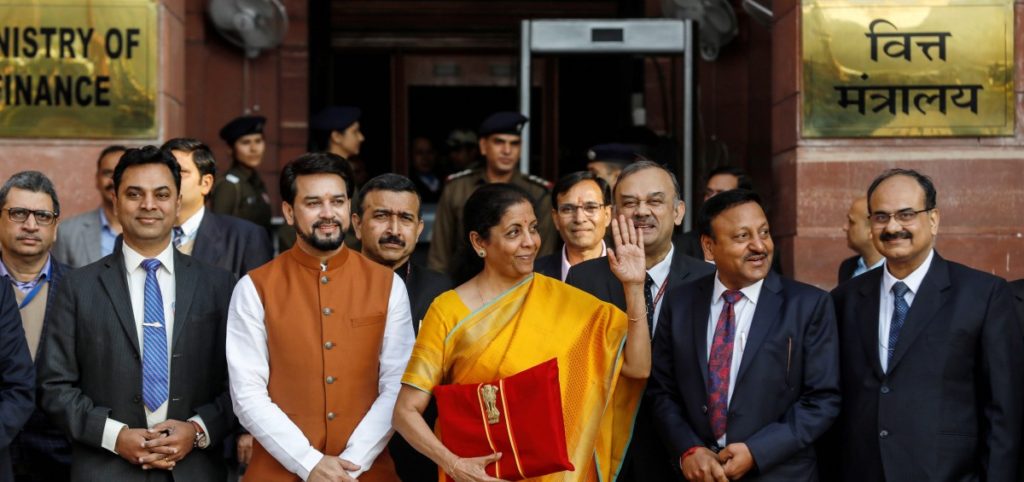There are really only two numbers to look out for in the forthcoming budget: how much did the government claim to have spent in 2020-21, and how much does it intend to spend in 2021-22.
These two numbers will determine whether there is any real hope of sustained macroeconomic recovery in the near future, notwithstanding any claims of green shoots or revival that the finance minister may point to.
As it is, the Indian government’s response to COVID-19 has been, in purely economic terms, one of the worst in the world. Not only did it impose a national lockdown without notice or consultation, at a time when it was not needed, it then proceeded to “unlock” as cases mounted and infections spread more rapidly, thereby putting more people at risk.
It deprived hundreds of millions of people of their livelihoods at one stroke and then provided next to nothing in terms of compensation or social protection. This is both astounding and inexcusable in a country where around 95% of all workers are informal, and around half of those are self-employed, and where the loss of income beyond even a week can lead to absolute starvation for millions who were already at the margin of subsistence.
The government even hoarded—and increased the volume—of food grain surpluses lying with the Food Corporation of India at a time when absolute hunger among the people increased massively. The extension of some free food grain (only 5 kg per month) to those holding ration cards was discontinued after November 2020, even as food stocks remain at more than double the buffer stock requirement and even cost the FCI money to store. Nothing was done for the more than 100 million deserving people estimated to be outside the ration system for no fault of their own. The denial of basic food items to hundreds of millions of people is more than a human tragedy: it will reflect in maternal, infant and child undernutrition with terrible consequences for the future.
Lack of spending
In macroeconomic terms, the lack of public spending had disastrous effects. In the period from April to November 2020, total central government spending actually declined in real terms (that is, once inflation is taken into account): it increased by only 4.7% compared to the same period in the previous year, while inflation over the period was more than 6%. This amounts to a negative fiscal stance during a downswing, which is so inexplicable and wrong as to be almost impossible to believe.
Not only did the central government refuse to spend more itself; it also refused to let the state governments spend more either. After invoking the centralising National Disaster Management Act to declare a national lockdown without consulting or informing states, the Centre then proceeded to avoid any fiscal or other obligation to deal with the pandemic or the consequences of its own actions. Instead, it left the state governments to deal with the additional health spending and other measures required to deal with the increased economic distress as best they could. As part of the second “stimulus” package in July, states were allowed to borrow more—knowing that they would have to repay later and that their borrowing costs would be much higher than the central government.
The Centre even refused to pay the GST compensation dues owed to the states, instead forcing down a complicated system of back-to-back borrowing to cover part of its own dues, whereby the Centre borrows from the RBI and lends the money to the states, which they will eventually have to return, albeit without interest! Even this ridiculous and unfair arrangement covers less than half of the GST compensation dues for the year.
All this extraordinary curtailment of government spending during the pandemic and economic decline, all this denial of its own financial obligation to the state governments: for what purpose? It results directly from the central government’s absurd fear of increasing the fiscal deficit.
This is absurd because such fiscal compression will only add to the tendencies for economic contraction, in addition to prolonging and intensifying the suffering of the people. And this contraction of economic activity will lead to lower tax revenues as well. So it is hardly surprising that the fiscal deficit has continued to increase beyond projections.
And this is despite the other surprising measure of the government—the continued use of higher taxes on fuel to supplement its incomes during the recession. Petrol and diesel prices in India are now at historic highs, leading to the depressing tendency towards stagflation—rising inflation even while the real economy declines or stagnates, and wage incomes collapse.
After such crimes, what forgiveness? The only redemption would come from a reversal of these crazy, unjust and counterproductive policies. In other words, from a significant increase in public expenditure, especially in areas with high multiplier effects, such as health, nutrition, social services like education, economic sectors like agriculture and expansion of the employment guarantee in rural areas as well as its introduction in urban areas; as well as more spending in areas that would help to overcome any supply bottlenecks that have emerged because of the breakdown of supply chains resulting from the poorly planned and aggressively implemented lockdowns.
Some of this increase in spending could be immediately financed through solidarity taxes imposed on the extremely wealthy and reforming tax systems to prevent multinational companies from shifting profits out of the country and thus avoiding paying their fair share of taxes in India even at the existing tax rates.
But these are secondary concerns at the moment. The most important concern is that of increasing public spending, which is why, I repeat: there are only two numbers to look for when the Union Budget is presented this year.
(Jayati Ghosh is professor of economics at Jawaharlal Nehru University, New Delhi.)




